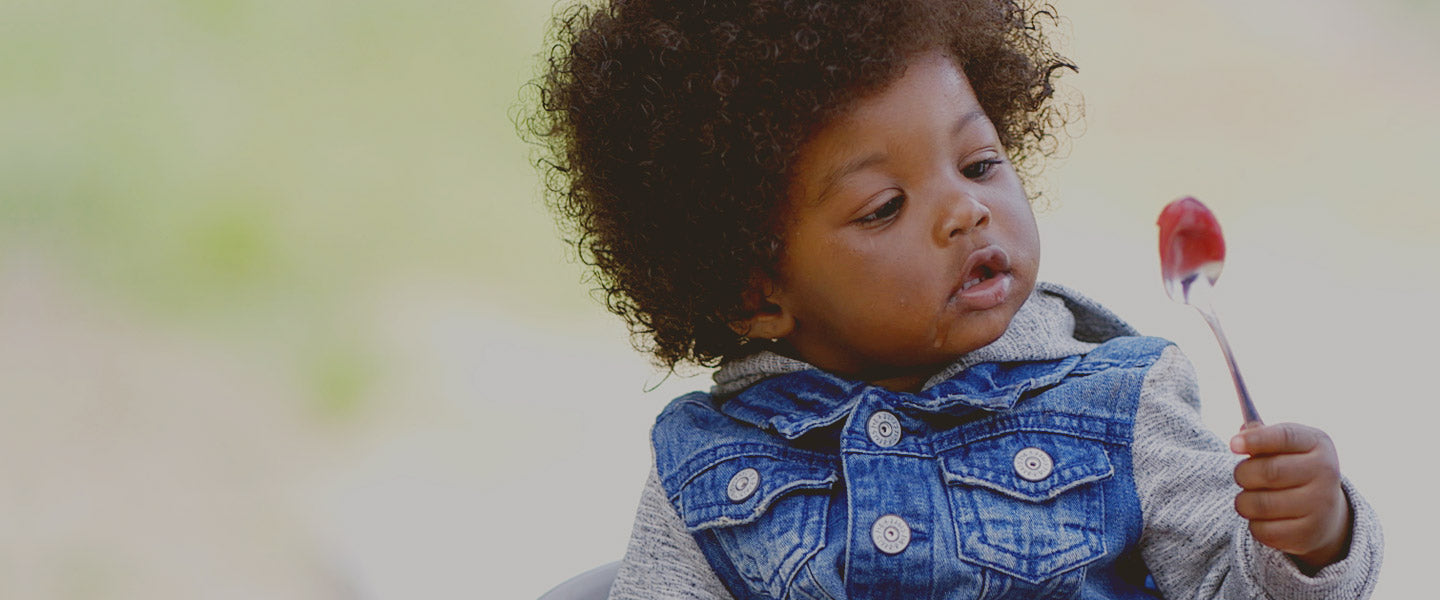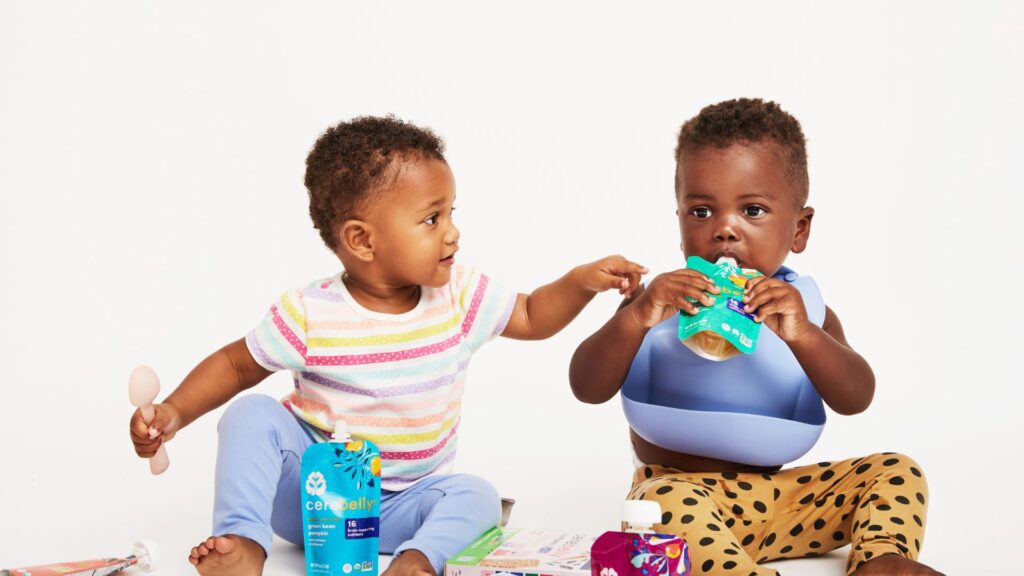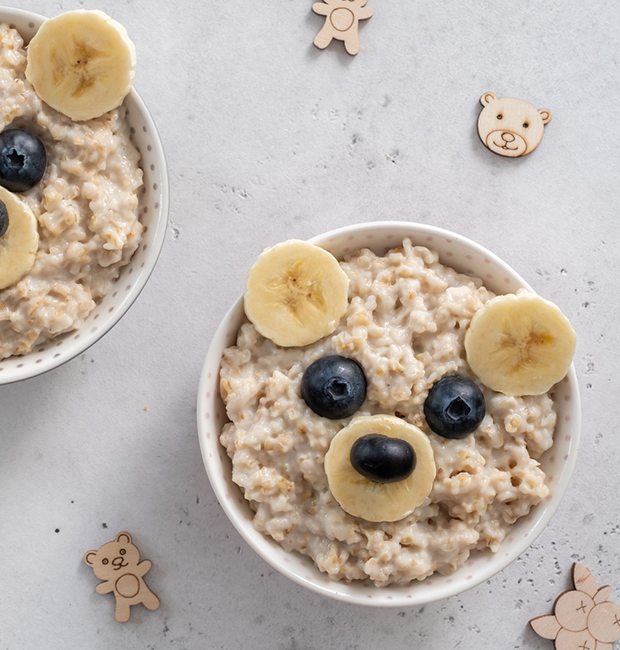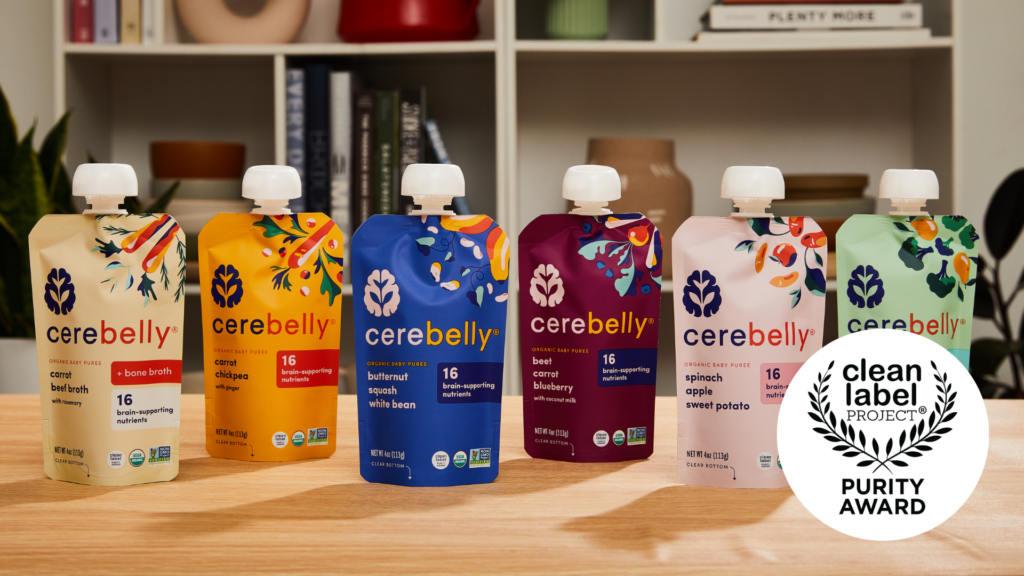How Do I Get My Baby to Eat Healthy Food?
3-min read
How Do I Get My Baby to Eat Healthy Food?
KEY TAKEAWAYS
- We’re born with a taste for sweetness, but what we actually like to eat is much more complex.
- Kids can learn to like veggies and other nutrient-dense foods.
- You may have to offer a new food several times. Don’t stop just because your baby makes a face!
Let’s tackle the big question right here at the top: given kids’ innate preference for sweet-tasting foods, getting them to eat healthy often feels like an uphill battle. Can you help your little one develop a taste for veggies and other nutrient-dense foods? The answer, backed by science, is a resounding “Yes!”
Here’s the main reason why: Despite our natural fondness for sweet foods and mild aversion to bitter foods, nearly all of our taste preferences—what we actually enjoy eating in real life—are learned through exposure.
And here’s the main takeaway: Keep trying with the healthy food. You may have to offer a particular food eight times or more over several days, but often that’s what it takes to make the breakthrough.
Nearly all of our taste preferences—what we actually enjoy eating in real life—are learned through exposure.
The science behind what tastes we like
Our taste preferences start before we’re even born. Studies show that the tastes and smells of the food mom eats infuse her amniotic fluid, familiarizing and endearing her baby to those tastes and smells. (1, 2) This phenomenon even extends to garlic!
A similar dynamic shows up with breastfeeding. The taste of a mother’s milk is subtly changed by the food she eats, and in many cases her baby learns to like those flavors. (3, 4)

Taste and smell work together
We can distinguish between millions of different tastes. But our tongue only does five: sweet, sour, salty, bitter, and umami (a savory taste). Tastes like sweet and bitter develop in the womb, while others, like salty, show up around 4 months of age.
Where do the millions of other tastes come from? Our sense of smell. It takes over what our taste buds get started. Babies have a strong sense of smell, and they’re sophisticated tasters straight away.
What babies like to eat can change through exposure
Lots of studies show that babies’ taste preferences can be changed.
Here’s one eye-catching example. Scientists fed babies two types of formula: normal cow’s-milk formula, and a specialized version called protein hydrolysate. (5)
Cow’s-milk formula has a natural sweetness. It kind of tastes like the milk left over at the bottom of your cereal bowl. Protein hydrolysate formula, on the other hand, is bitter and sour, and most of us would find it pretty unpleasant.
The scientists found that babies predominantly fed the cow’s-milk-based formula were less likely to take to the protein hydrolysate formula. But babies who were more frequently given the protein hydrolysate formula started to like it. And the earlier and more regularly the baby had been drinking protein hydrolysate formula the more they liked it.
This suggests that a baby’s taste preferences—even for bitter and sour things—can be changed with repeated exposure.
The flavors you offer now shape their taste buds for life
Common sense also supports the notion that kids aren’t pre-programmed taste robots. An obvious example: Babies from various cultural backgrounds often learn to enjoy powerful flavors that are traditional in that culture, typically because they eat what their family eats.
Some experts say there’s a “flavor window” up to around seven months, when new foods have the best chance to catch on. But don’t worry if you’re past that—babies and toddlers (and older kids and grown-ups!) can learn to enjoy new foods and flavors at any age.
Taste is complex and mysterious
Sweet and bitter look like definitive categories at first glance. But think about your own taste preferences. You may have a sweet tooth. Does that mean you like every sweet food out there? Probably not. Within the sweet category, you have foods you like and foods you don’t. And for endless reasons: texture, other flavors mixed in, what mood you’re in, and on and on.
Likewise with veggies, meats, and virtually every other food. What you like to eat, and when, is a reflection of an ever-evolving YOU, not simple categories of taste. Same with your baby.

3 tips for getting your baby to like new flavors
- Start young. Early exposure to a variety of foods can be a difference-maker.
- Offer often. Repeated exposure is key. Give your baby several chances over many days to try a new food. They’ll eat some, throw some, and maybe give some to the dog. And they’ll probably make some faces along the way. But be patient.
- Eat a healthy and varied diet yourself. Demonstrate good habits by eating a variety of nutrient-dense foods—your baby is learning from you! If you’re pregnant or breastfeeding, there’s good evidence that your baby becomes familiar with and starts to like the tastes of the main foods in your diet. That’s another way to try and create an adventurous eater right from the start.
How many times do babies need to try a new food before they start to like it?
There’s no hard and fast number, and every kid is different. But it’s probably not going to be once or twice.
One study found that babies offered pureed green beans eight days in a row ate nearly three times as much on Day 8 compared to Day 1. (6) Another study says new foods may need to be offered 10 to 16 times before they are accepted. (7)
This may sound like way too long to wage the Battle of the Broccoli or the Tantrum of the Tomato. But it’s all about familiarity. The more familiar your baby becomes with a particular food, they better the chance they’ll start accepting it and even liking it.
A fascinating side note: Many of us, trying to get our baby to eat a new, healthy food, give up if they make a face. The green-bean study mentioned above looked into this. It turns out making a face doesn’t necessarily mean they dislike the food. It’s often a response to something new, not something bad.
When the babies in the study tasted green beans for the first time in their lives, 95% squinted, 82% wiggled their eyebrows, 76% raised their upper lips, and 42% wrinkled their noses.
But remember, by Day 8 these babies were eating three times as much pureed green beans on average.



